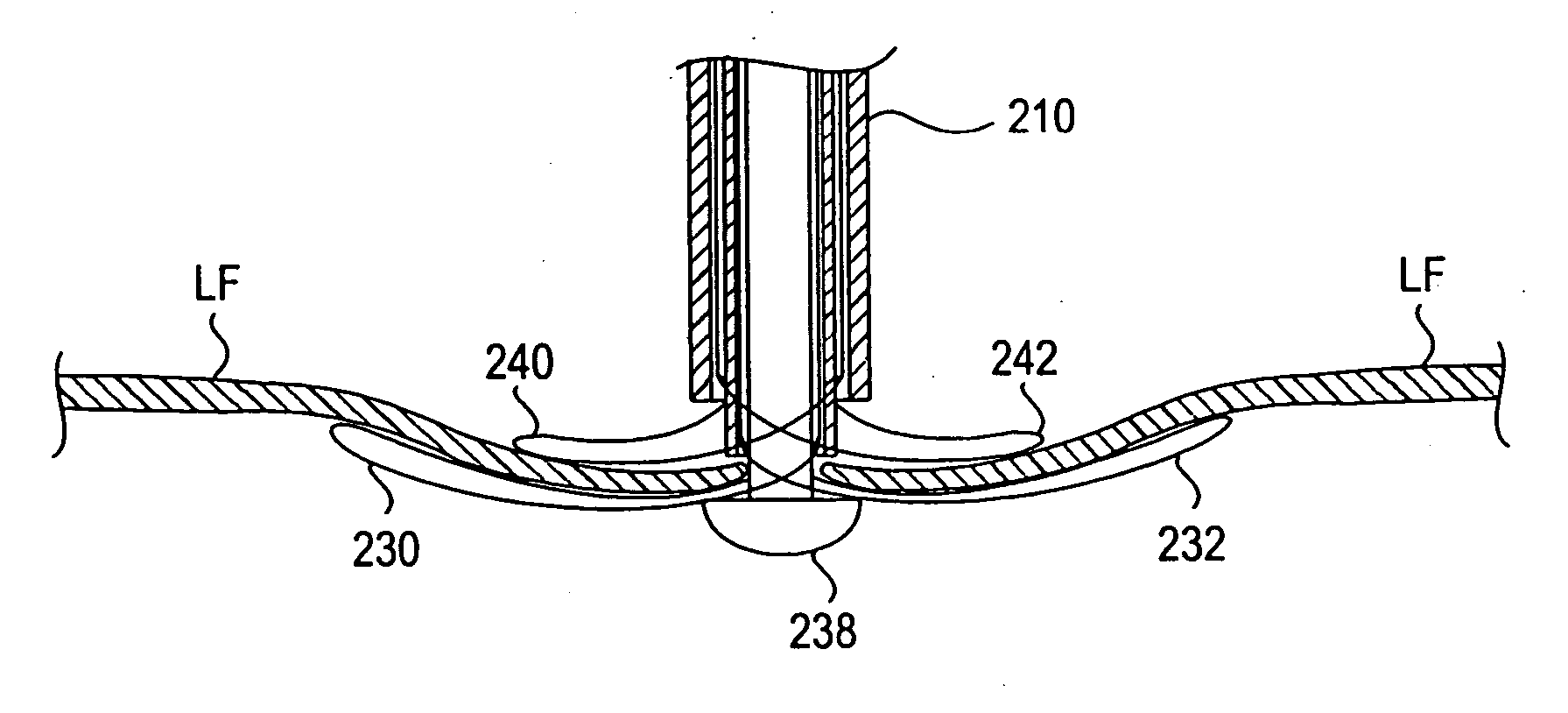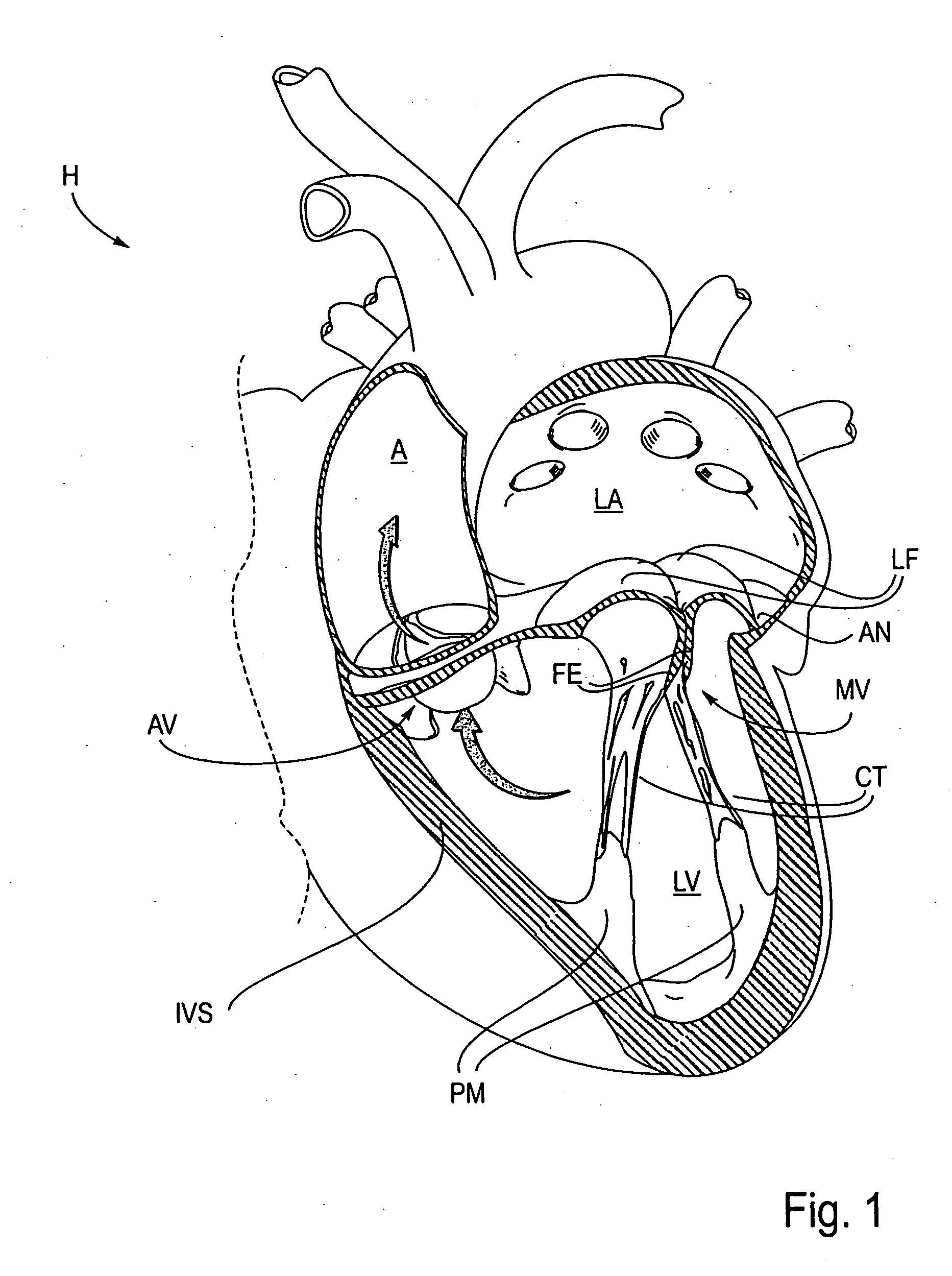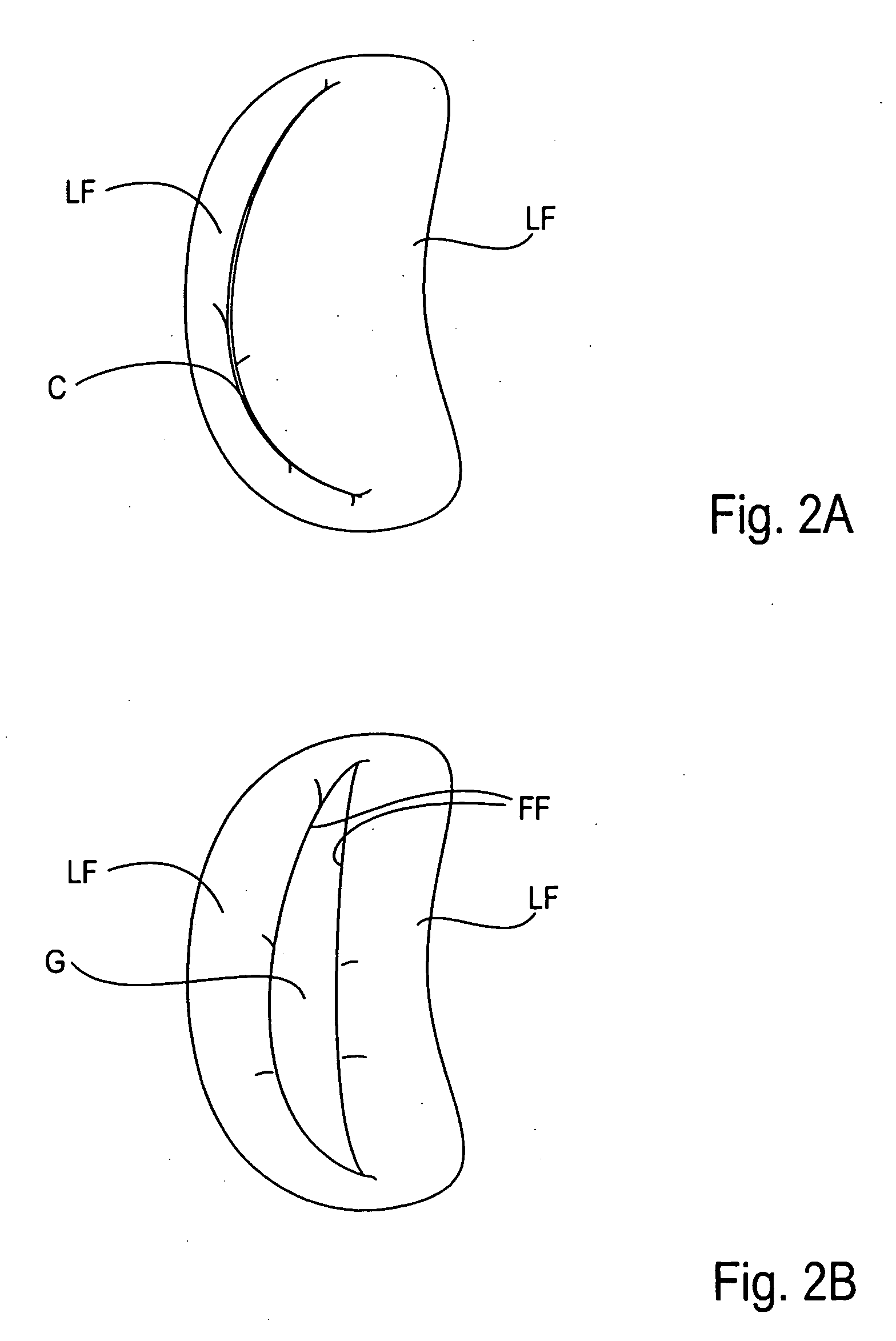Methods and devices for capturing and fixing leaflets in valve repair
a leaflet and valve technology, applied in the field of medical methods, devices and systems, can solve the problems of valve leaflet prolapse, valve leaflet regurgitation, regurgitation, etc., and achieve the effect of stable and effective fixation of leaflets
- Summary
- Abstract
- Description
- Claims
- Application Information
AI Technical Summary
Benefits of technology
Problems solved by technology
Method used
Image
Examples
first embodiment
[0129] In the first embodiment, referring to FIG. 42, the interventional catheter 500 comprises an elongate shaft 502 having at least one capture device 504 and guide conduit 506 disposed near its distal end 508. The capture device 504 comprises distal loops 510 which are located near the tip 512 of the catheter. Two distal loops 510 are shown, one on each side of the catheter 500, for the capturing of two valve leaflets. The distal loops 510 are retracted for introduction of the catheter 500 through a previously placed guidecatheter. Proximal loops 514 and guide conduits 506 are also shown. Since both the proximal loops 514 and the guide conduits 506 are located proximal to the distal loops and approach the atrial surface of the leaflets, they may be interconnected at the guide conduit cuff 516 as shown. In addition, such interconnectivity may provide advantages which have been presented earlier in relation to embodiments having similar interconnectivity. It may be appreciated, how...
second embodiment
[0136] In the second embodiment, referring to FIG. 52, the interventional catheter 1050 comprises an elongate shaft 1052 and a detachable capture device 1054. The capture device 1054 comprises, among others, proximal elements 1056 and distal elements 1058. Such a capture device 1054 is similar to that presented in FIGS. 17C-17D. Again, the proximal elements 1056 may be separately deployable from the distal elements 1058. As shown, the distal elements 1058 are deployed so that they are extended radially outward from the shaft 1052. The proximal elements 1056 may be held against the shaft by sutures 1060 which are drawn up within the shaft 1052. In this orientation, the catheter 1050 may be manipulated between the leaflets so that the distal elements 1058 are positioned against the ventricular surface of the valve leaflets LF.
[0137] Referring to FIG. 53, the proximal elements 1056 may then be released by slacking the sutures 1060. This allows the preformed elements 1056 to extend radi...
PUM
 Login to View More
Login to View More Abstract
Description
Claims
Application Information
 Login to View More
Login to View More - R&D
- Intellectual Property
- Life Sciences
- Materials
- Tech Scout
- Unparalleled Data Quality
- Higher Quality Content
- 60% Fewer Hallucinations
Browse by: Latest US Patents, China's latest patents, Technical Efficacy Thesaurus, Application Domain, Technology Topic, Popular Technical Reports.
© 2025 PatSnap. All rights reserved.Legal|Privacy policy|Modern Slavery Act Transparency Statement|Sitemap|About US| Contact US: help@patsnap.com



